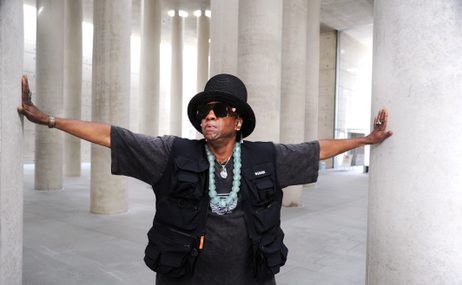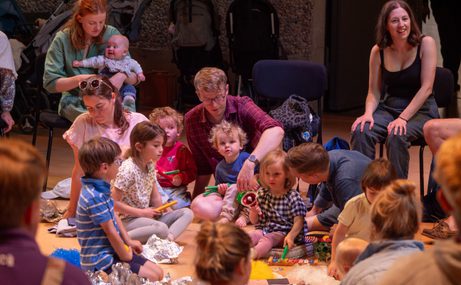Camille De Rijck talks to Aldeburgh Festival featured musician Pavel Kolesnikov about his fascination with American artist Joseph Cornell – creator of ‘magic boxes’.
Joseph Cornell (1903–1972) was a pioneering American visual artist who developed an original style based on the assemblage of cast-off artefacts.
When Pavel Kolesnikov arrived in London ten years ago, he was introduced to the pianist Alfred Brendel. It was in the course of conversation that Brendel mentioned the artist Joseph Cornell, and he ended up leafing through two albums under the gaze of his young colleague. As Kolesnikov remembers: “When I was confronted with these works for the first time, I was not only blown away by their force. It happens to me, sometimes, when I am fascinated by an artist, that I let him lie fallow in part of my spirit and then return, as a single adventure, from time to time. In Cornell’s case, the interest was immediate and permanent.” The pianist therefore started to buy books, study them – the work rather than the life – always keeping within himself the desire to be able one day, in one way or another, to try out Cornell’s work through the prism of Kolesnikov’s own instrument.
According to Kolesnikov, “Cornell assembles objects but without ever falling into the genre of a still-life. What he puts together is the art of a free spirit who makes links between disparate elements. It is, overall, a weaving together of paradoxical links which rests on intuitive energies.” A white magic. “Cornell’s work favours the discharge of certain tensions or, still better, manages to sublimate them.” Although constantly on the move in his work, Cornell was known to be a stay-at-home who barely went further than the porch of his house and who offered to his spirit the embassy of elsewhere. It’s around the title “Celestial Navigation” and its different musical associations that the present project came into being, Kolesnikov persuading himself that the constituent elements of Cornell’s art are, in a very real sense, the ordinary basics of the recital.

Pavel Kolesnikov
Rather more troubling was Kolesnikov’s sense that his recital activities had always stemmed from a Cornellian gesture. “What is a recital if it’s not a Cornell box?” Disparate elements, imagined by a variety of hands and brains which, put together by a third, take on a composite significance. “If each work is a world in itself, the relationship of these worlds engenders a variety of third worlds, whose significance is always superior to their sum.” It is in playing with these notions that the idea of this recital was born.
The study of Cornell’s work took hold: absorbing its elements, Kolesnikov realized that he could distance himself from it and, by that very action, could get to know it even more intimately. The addition of textual elements to the concept – by the writer Martin Crimp – and visual ones – by the architect Sophie Hicks – is the result of a desire, long felt, to make the moment of a recital into a theatre piece. “Already, my programmes around Children’s Corner and Proust contained the nub of this. I was trying to escape from the image of the pianist who sits at the piano and plays in the dark.” To try therefore and enlarge the experience by adding extra-musical elements that acted as a commentary.
It’s thanks to the Aldeburgh Festival that the project finally took shape. “When I explained the idea that was engaging me, they encouraged me to work in greater depth on a new kind of recital which would take into consideration different elements generally foreign to this sober exercise. There was even a thought of doing it outside, on the beach, the stage turning its back to the sea, but the idea remained tricky because of the weather and the presence of especially assertive seagulls. That was when we decided to come back inside and I realized that Snape Maltings could, very realistically, also serve as a Cornellian metaphor.” And there were all the elements in the box.
Celestial Navigation is at the Aldeburgh Festival on June 10.
Translated by Roger Nicholls. The full version of this article appears in the Aldeburgh Festival Book, available from the Box Office and Festival venues, 09-25 June.
Main image: Joseph Cornell (1903–1972) Celestial Navigation, c.1958 Assemblage of painted wood and printed papers, aperitif glasses, marbles, plaster head, painted cork ball, metal rods, brad nails and painted glass. Overall: 10 × 16 3/8 × 3 7/8in. (25.4 × 41.6 × 9.8 cm). Whitney Museum of American Art, New York, USA. 60th Anniversary Gift of Este Lauder, Inc.. Inv. N.: 92.24a-e Digital image Whitney Museum of American Art / Licensed by Scala © The Joseph and Robert Cornell Memorial Foundation
Pavel Kolesnikov at the Aldeburgh Festival

Snape Sessions: Robert Owens
Join us for a night of deep grooves and soulful energy as we welcome house music legend Robert Owens to the Britten Studio.
Britten Studio, Hoffmann Building, Snape Maltings
|
More info
Free event:
Mini Music Makers in the Jerwood Kiln Studio
Mini Music Makers is being taken over and moved to The Jerwood Kiln Studio at Snape Maltings for a joyful one-off session led by residency artists Hugh Nankivell and Wils Wilson.
Jerwood Kiln Studio, Snape Maltings
|
More info
Legacy Coffee Morning
|
More info
